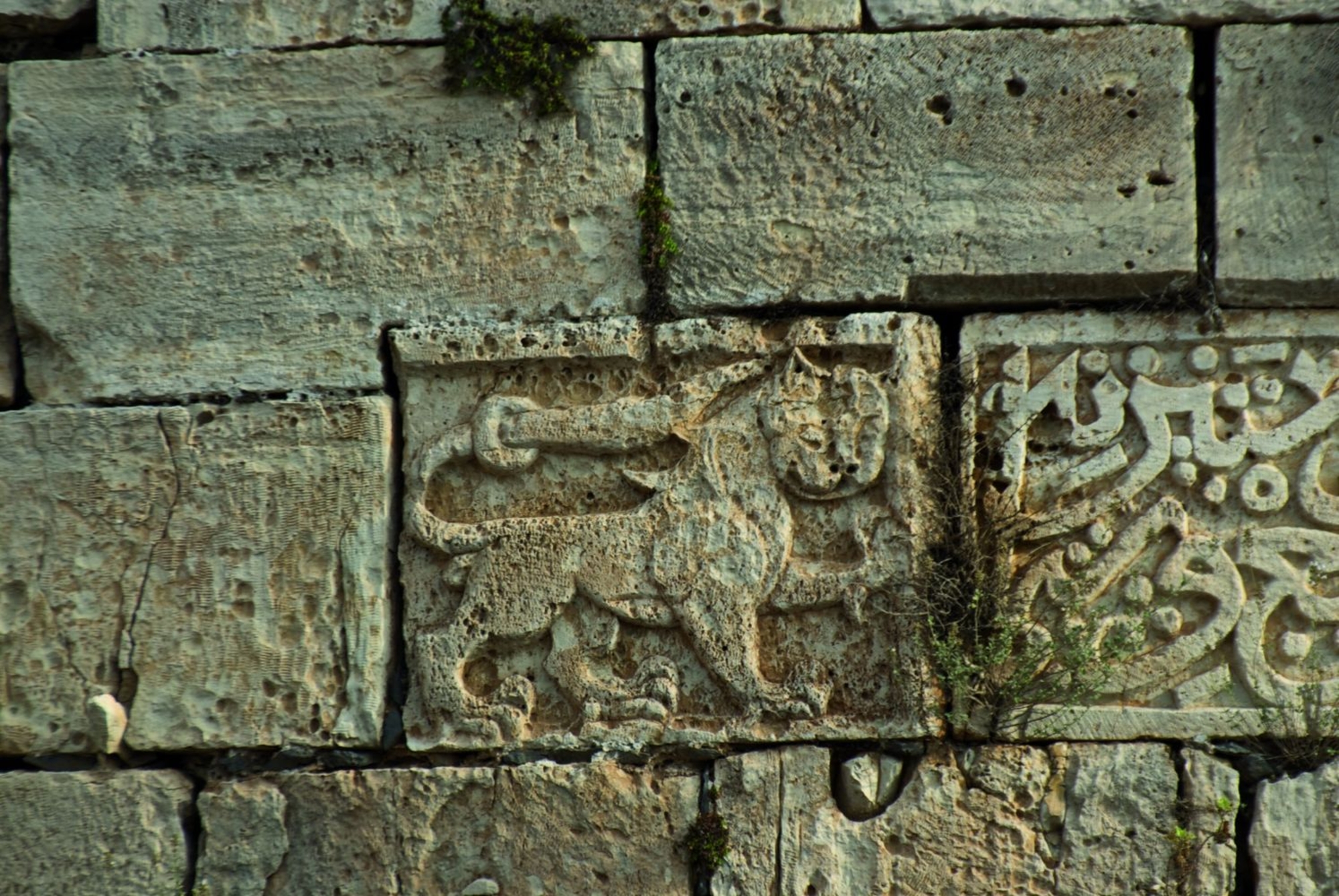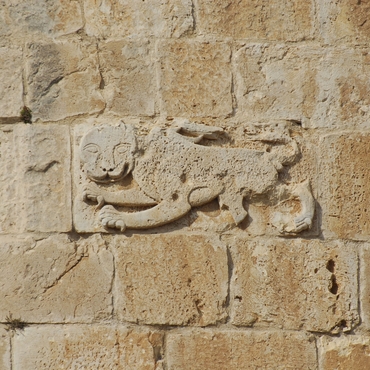
- Home
- Explore the site
- The Mamluk castle (13th-14th centuries)
- Baybars’ alterations
The southwest tower
This tower on the site of the former Hospitaller tower destroyed by the Aleppine sappers was probably the first to be rebuilt after the siege of 1271. It is a round tower approximately fifteen metres in diameter, solid at the base and strengthened by a massive talus. Although now levelled to its crown of machicolations, a photograph taken by Baron Rey shows that the tower was still visible in its earlier state at the end of the 19th century.
The interior of the tower is octagonal with groin vaults around a central pillar.
The tower bears two inscriptions to the glory of Baybars and his son. The first, a long epigraphic strip, is dated 1271 and framed by two reliefs of lions, Baybars' emblem. The second, monumental inscription runs around the octagonal pillar inside the tower ; it reads:
xxx ”Glory to our lord, Sultan al-Malik al-Zahir, and strength to his child al-Malik al-Sa'îd, son of al-Malik al-Zahir, the learned, the righteous, defender of the faith, Rukn al-dunya wa'l-Din Abu'l-Fath Baybars, Emir of the Believers!
The southeast gate tower
The southeast Mamluk tower, built against a gate in the Crusader enceinte, is semi-circular and some 13 metres in diameter. The tower has a solid base and two floors of casemates.
As was customary in fortresses built by Muslims, the gate’s outer portal is on one side of the tower to keep it out of enemy sights and protect it from siege machines. The gate was accessible from a ramp of which only the pile bases are still visible, and then a wooden walkway, which could be removed at any time if the castle was threatened by enemy forces.
The tower has two inscriptions, one above the lintel of the gate, dated 1278, which is intended to commemorate the restoration work on the eastern enceinte, and the other on its face dates the construction of the tower in 1271. A lion passant, Baybars’ emblem, features next to the inscription.
The northern barbican: a complex architectural reading
Understanding the restoration of the barbican is far from an easy task. It has been reworked and refaced multiple times, probably with stone from a previous construction.
Evidence of Mamluk rebuilding is visible on the lintel above the entrance gate. It is decorated with a geometric motif that forms stars based on a zigzag module.
The portcullis that precedes the gate is an extremely rare device in Islamic fortification, which raises a number of questions. Other known examples are at Subayba castle, in the Golan Heights, once attributed by Deschamps to the Crusaders, but more recently reattributed to the Ayyubid princes in the 1230's.





